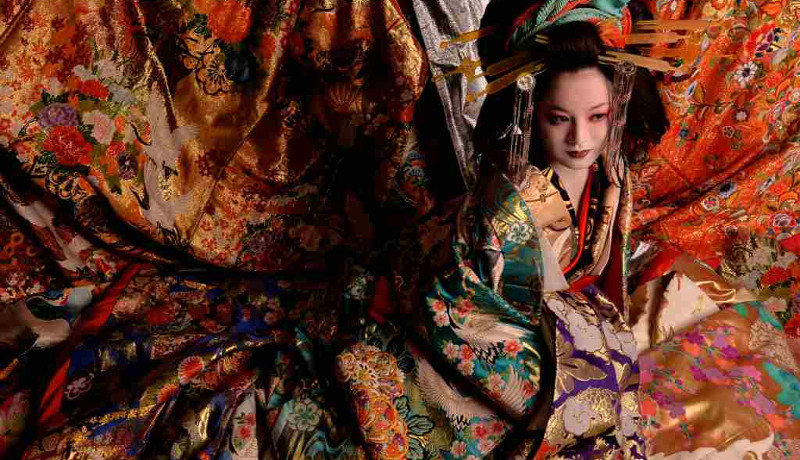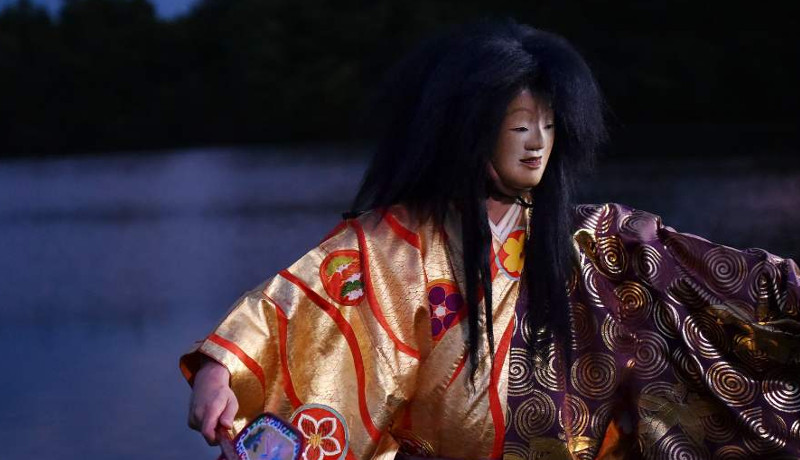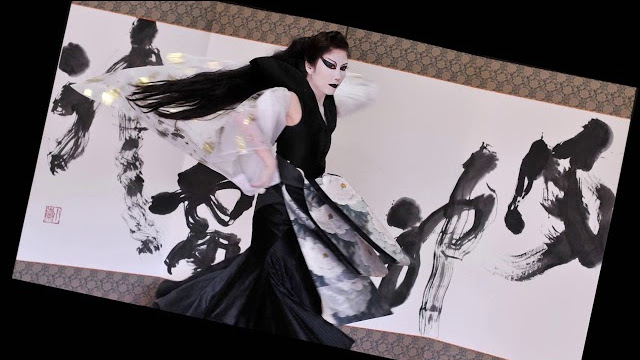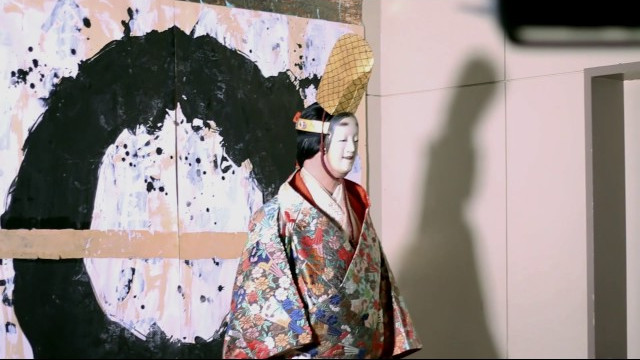Photo Masterpieces
These photo works are mainly from two collections of the pieces called "The Japonism" and "Through the other side". Each work expresses the essences of the Japanese sense of beauty, emotions, and spirituality.
Naoya Yamaguchi mentions ‘The images for the pieces well up from my unconsciousness, and I put them in actual pieces by using Japanese traditional cultures and the sense of Japanese'.
But the stories subsisting in the photos, the performances of the models, the ways to wear kimonos and the way to apply Japanese makeup are often unconventional and more often his original. Therefore these photos are not his reportorial pieces about Japan, but some more profound and clear essences of Japan.
So his photo pieces have something nostalgic for most Japanese people, but at the same time, it will evoke the feeling somewhat unprecedented that people have never seen those before.
In principle, his pieces are all actual photographs and not composed of computer skills. Obviously, the supreme advantage of photography is being able to catch the exact moment. However, Yamaguchi thinks the more important part of photography is to express the texture and atmosphere of the real world.
He says ‘I think photography should have a sensibility, a thought, an emotion, and a sort of truth. And perhaps I want to gaze at the real world around us'.
The Japonism
In the 1860s, Ukiyo-e, Japanese wood-block prints, became a source of inspiration for many European impressionists, especially painters and even for "Art Nouveau and Cubism". As you may know, such a trend in Western art-history is called "Japonisme". Artists were especially influenced by elements such as ‘the lack of perspective and shadow', ‘the flat areas of simple color', ‘the compositional freedom in placing the subject off-center', ‘frequently asymmetric', ‘the multi-viewpoints' and ‘the various motives from nature'.
From the point of view of Japanese aesthetics, ‘the bold deformation (Hokusai,Sharaku)’, ‘the decorative style after Mannerist pattern (Kano-ha,Rin-pa)’, and ‘the emphasis of horizontal and straight lines (Kastura-Rikyu)’ can be included in the above.
However, if you turn your eye to the spiritual aspect of Japanese art, there are more important elements; ‘the subtle and profound silence (Yuhgen)', ‘the contemplation of nature (Haiku)', ‘being engrossed in static beauty through spontaneous imagination (Noh play)', and ‘the sensibility for the beauty of flowers fluttering in the breeze (Mujo-kan: e.g. cherry blossom as the iconic flower of Japan)' are examples.
These elements must have some implications for the Japanese ‘collective unconsciousness' which exists in their mind.I would also like to express these points.
So my "The Japonism" with these new viewpoints is clearly different from the existing "Japonisme".
- Photo & Art Director: Naoya Yamaguchi
- Make-up & Kimono Director: Chikako Takaki
- Kimono Stylist: Mayumi Terauchi
Through the other side
The work collection "Through the other side" is a series of the shooting Noh dance in nature suitable for the stories. Such shootings are the first attempt in Japan and Yamaguchi added pieces in front of the abstract painting to this series.
This abstract painting is based on the art of Japanese style by famous Rin Terada. He has incorporated the spirit of Zen into his work.
Noh is a Japanese traditional performing art that is played in the barrier called "Noh Butai (stage)" and has a history of over 650 years after its shape had been completed.
In the structure as a dramaturgy of Noh, the Shite (leading role of Noh) who covers his face with the Noh-mask is not a human being but is a ghost, a spirit, or the Deity in many cases. Usually, a monk who is travelling meets them in the unusual time leaving his daily life.
I thought that I should shoot these creatures who were from the other side not in the limited space of Noh stage but in nature as a corner of the universe and with an abstract picture expressing the spirit of Zen against the background.
It's not going too far to say this photo masterpiece "Through the other side" is an extraordinary work in photography.
- Photo & Art Director: Naoya Yamaguchi
- Noh Play: Chitoshi Matsuki
- Paint Works: Rin Terada
- Ballet: Maylen Tleubaev
Movie of Masterpieces
Japan beauty Kimono by Ms.Japan's official photographer
Mr. Yamaguchi, who takes publicity photos for actress and TV personalities, as well as being photographer for “Miss Japan competition”.
At the same time, he has created original collections of artworks which express a Japanese sense of beauty, and he has achieved such feats as opening many personal exhibitions, and publishing photo books.
Now, he owns a studio for shooting commercials in “Sendagi” where a Japanese nostalgic atmosphere still remains.
- Date: 19 October, 2017
- Photo & Art Director: Naoya Yamaguchi
- Make-up & Kimono Director: Chikako Takaki
- Kimono Stylist: Mayumi Terauchi
Session "TEN-CHI-JIN"
Mr. Terada is a Japanese painter living in Germany and the works "Tenchi" and "Zen" exhibited this time are first published in Japan. Both are large episodes with a width of 20 meters, so we borrowed out the elementary school gymnasium which was a school in Ichihara city in Chiba prefecture, and exhibited and photographed. The co-star is Mr. Matsuki of Kansei style who is currently shooting works in collaboration, Mr. Miren of the New National Theater Ballet Company who became the first foreign principal in Japan.
It expresses the world view of heaven and underground, moment and eternity, dynamic and static, Zen connecting it. Currently holding a solo exhibition in Berlin. This is a video of the shooting landscape, shed at the reception in Berlin.
- Date: 02 June, 2017
- Photo & Art Director: Naoya Yamaguchi
- Paint Works: Rin Terada
- Noh Play: Chitoshi Matsuki
- Ballet: Maylen Tleubaev
Naoya Yamaguchi
CEO of "Studio☆Diva" established in 1994.
Official exclusive photographer of "Miss Japan Contest" since 2005.
Master's degree in criminology obtained from Waseda University.
- Warsaw Poland(2011)
- Lucca Italy(2012)
- Rome Biennial Italy(2013)
- Bellinzona Switzerland(2013)
- Roma Italy(2014)
- Athens Greece(2014)
- Philadelphia USA(2014)
- Naples Italy(2014)
- Bucharest Romania(2014)
- Lucca Italy(2015)
- Rome Italy(2016)
- Bologna Italy(2016-2017)
- Berlin Germany(2017-2018)
- Berlin Germany(2018)
Get in touch
The copyright of photos and images posted on this site belongs to Diva Unison inc. We will refuse copying of pictures and images hard.






